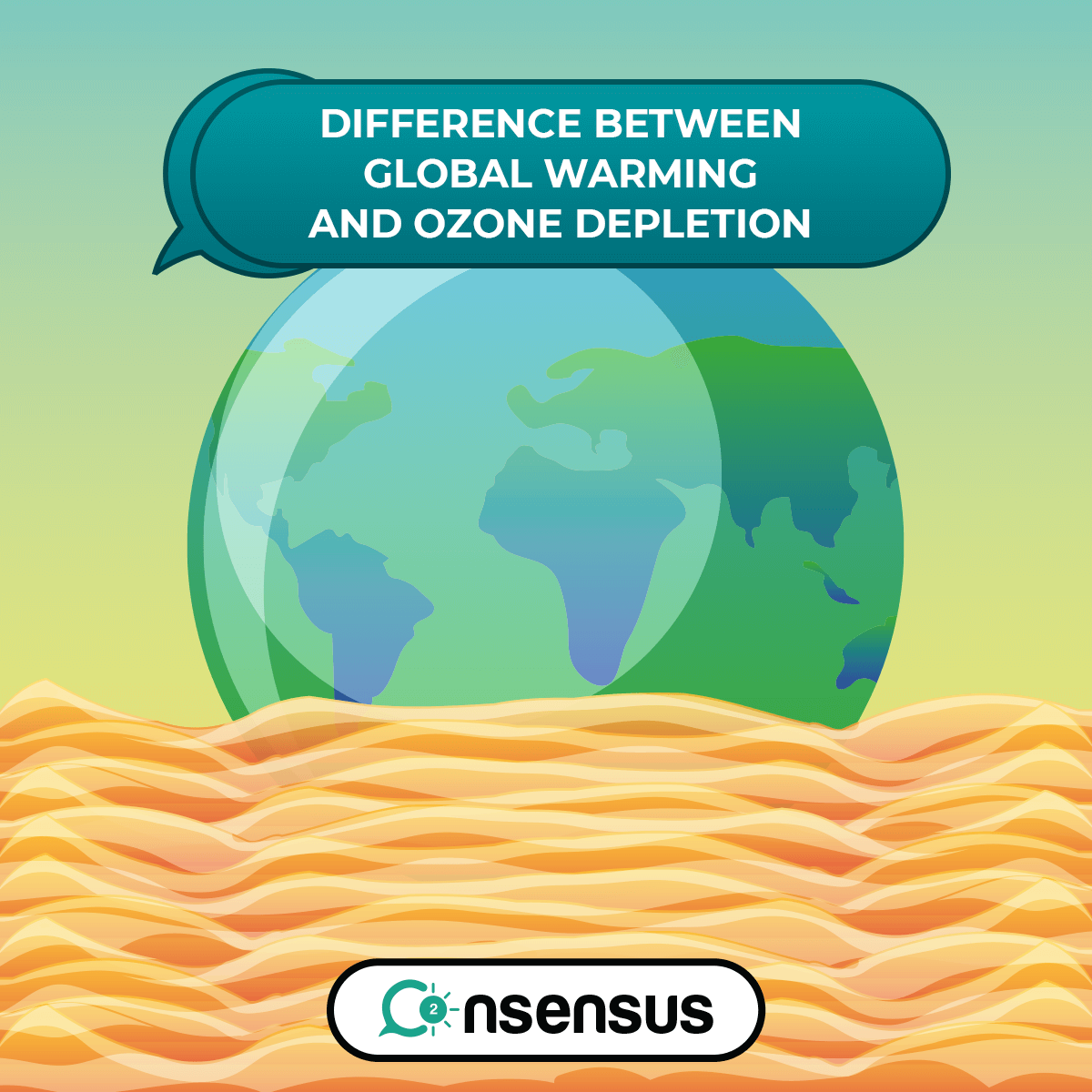With the increasing awareness about the environment, there is a need to fully understand the difference between the commonly used terms global warming and ozone depletion. Both of these terms are quite different but they are caused by human activities that result in the release of pollutants into the atmosphere.
Global warming is actually caused by the excessive production of carbon dioxide into the atmosphere. This is done when coal, oil, and natural gas are burned to generate electricity or to run our cars. Carbon dioxide spreads like a blanket, which is then responsible for the absorption of infrared radiation, which ultimately causes the temperature to rise.
Carbon dioxide accounts for 80% of the greenhouse gases being produced. The remaining 20% are due to methane and nitrous oxide. All these greenhouse gases are responsible for causing adverse environmental effects such as loss of habitat, melting of glaciers, and frequent occurrence of floods, famines, heat waves and rainstorms.
On the other hand, ozone depletion occurs when chlorofluorocarbons (CFCs) and halons, gases which are found in aerosol spray cans and refrigerants, are released into the atmosphere. Ozone sits in the upper atmosphere and absorbs ultraviolet radiation. CFCs and halons cause chemical reactions that break down ozone molecules, reducing ozone’s ultraviolet radiation-absorbing capacity.
The sun emits electromagnetic radiation at different wavelengths, as the atmosphere acts as a multi-layer shield that in turn protects Earth from dangerous UV radiation.
Stratospheric ozone is constantly produced by the action of the sun’s ultraviolet radiation on oxygen molecules (known as photochemical reactions). Although ozone is created primarily at tropical latitudes, large-scale air circulation patterns in the lower stratosphere move ozone toward the poles, where its concentration builds up.
Ozone is found in two different parts of our atmosphere. It is found in the troposphere and is responsible for acting as a human irritant and a component of smog. While the ozone in stratosphere makes up the majority of atmospheric ozone and is quite beneficial for us. The stratospheric ozone layer absorbs ultraviolet (UV) radiation, preventing dangerous UV rays from hitting Earth’s surface and harming living organisms.
Since the 1960s, there has been a trend of increasing warming of the lower atmosphere and a cooling of the upper atmosphere. This warming-cooling dynamic creates conditions that lead to ozone loss. In the 1980s, scientists discovered that the ozone layer was thinning in the lower stratosphere, leading to the “ozone hole”—in the Antarctic spring (September and October).
According to scientists, this thinning in the ozone layer was caused by increasing concentrations of ozone-depleting chemicals – chlorofluorocarbons or CFCs. These chemicals can remain in the atmosphere for decades to over a century.
However, ozone depletion is concerning because it directly impacts the health of humans, and other living organisms. People, plants, and animals living under the ozone hole are harmed by the solar radiation now reaching the Earth’s surface—where it causes health issues like eye damage and skin cancer.
At the poles, CFCs attach to ice particles in clouds. When the sun comes out again in the polar spring, the ice particles melt, releasing the ozone-depleting molecules from the ice particle surfaces. Once released, these ozone-destroying molecules do their dirty work, breaking apart the molecular bonds in UV radiation-absorbing ozone.
CFCs were commonly found in refrigerants, solvents, propellants, and foam-blowing agents before the Montreal Protocol was agreed on in the 1980s– an international commitment to phase out ozone-depleting chemicals that was universally ratified by all countries that participate in the UN.
Observations show that as the amount of greenhouse gases increase it results in heating in the lower atmosphere, known as troposphere. While, there is a cooling occurring in the upper atmosphere, known as stratosphere. The reason for this is because heat from Earth’s surface that normally would convey through the troposphere and stratosphere, and eventually escape to space, is now being trapped or confined to the troposphere.
Carbon dioxide and other heat-trapping gases rise into the atmosphere and spread around the globe, like a blanket wrapping Earth. This blanket warms the surface of the Earth and protects it from the cold air above it. The increased concentrations of heat-trapping gases make the blanket uncomfortably thicker. Since the Earth is now wrapped bin a thicker blanket, Earth’s surface warms up, heats the blanket itself, and traps even more heat in the lower atmosphere. Moreover, the blanket also prevents heat from moving from the lower atmosphere to the stratosphere, ultimately cooling down the stratosphere.
It could also be said that these heat-trapping gases contribute to creating the cooling conditions in the atmosphere that finally lead to ozone depletion. Greenhouse gases absorb heat at relatively low altitudes and warm the surface. However, they have the opposite effect at higher altitudes because they prevent heat from rising.
In a cooler stratosphere, ozone loss creates a cooling effect that results in further ozone depletion. UV radiation releases heat into the stratosphere when it reacts with ozone. With less ozone there is less heat released, amplifying the cooling in the lower stratosphere, and enhancing the formation of ozone-depleting polar stratospheric clouds, especially near the South Pole.
We can reduce global warming emissions and ensure that we take necessary steps to reduce both global warming and ozone depletion. This will guarantee a healthy, safe, and sustainable future for our coming generations.
